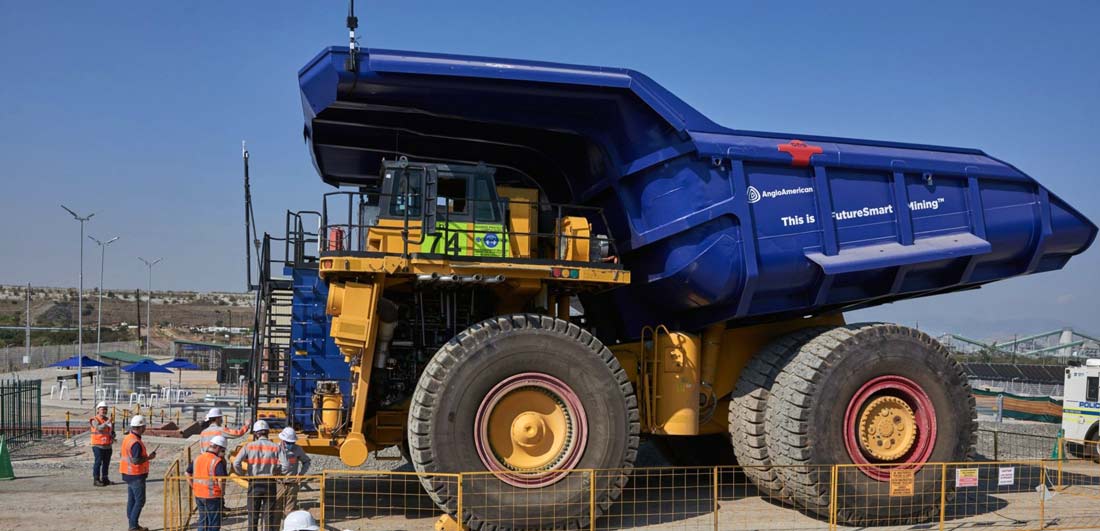In 2023 the heavy industry sector continues to meet the challenges of a perfect supply and demand storm consisting of a robust 21st-century construction boom while complying with the restrictive production inhibiting “green” policies often founded on obsolete 1970s environmental false alarms.
Building Demand For Essential Resources to Support a Population of 10 Billion in a Green World
Hydrogen fuel cells, fuel agnostic diesel engines, and even clean coal technology have all made impressive leaps forward as the global green movement increases the already voracious demand for essential mined minerals around the world. With each new energy innovation it seems the demand for mined resources escalates.
PGM (platinum group metals) are one example of green demand rising exponentially. The metals once known as “poor man’s gold” now have green applications in everything from catalytic converters in gas and diesel vehicles to hydrogen fuel cells for emission-free hauling at an industrial scale.
And once again we see the mining industry taking the green bull by the horns, right at the source.

Zero Emission Haulage at the Largest Open Pit Platinum Mine in the World
Anglo American, according to the informative article at Moneyweb, is a company with a “culture that takes clean energy seriously”. Years of R&D for retrofitting diesel haulers to hydrogen power are paying returns now in the form of the world’s biggest green-hydrogen powered truck.
The monster-sized hauler was unveiled last May at the Anglo group’s Mogalakwena platinum mine in Limpopo, South Africa. With an impressive haulage capacity of 290t and 400 haul trucks projected for the retrofitted hydrogen fleet, eliminating diesel emissions can erase 80% of the platinum mining operation’s carbon footprint.
How significant is hydrogen in the 21st Century? The Anglo group has already built supporting infrastructure including a hydrogen production, storage and refueling complex at Mogalakwena. The 400 truck fleet is backed up by the largest hydrogen electrolyser in Africa and a solar photovoltaic field.
For the mining industry this is as green as it gets, a true gamechanger for the sector so often under attack by environmentalists who still embrace the 1970s pseudo-science that has since been proven as laughably wrong.
Boom, Doom, and Gloom; Debunking 1970s Era Alarmism
The 21st-century construction boom will consume construction materials, aggregates, concrete, and energy at a rate that may be (ironically) unsustainable without all energy resources available on deck, whether it’s politically correct “green” or not.
An article at The Institute of Electrical and Electronics Engineers, IEEE, cites the rising human population as the primary trigger of an unprecedented construction boom in existing urban center expansions and new city building. MIT professor emeritus Rodney Brooks cited the projected increase from 7.9 billion humans on the planet now, to 10 billion by the end of the century as the primary catalyst firing up the 21st-century construction boom.
We’ve got no problem with those numbers, but the remainder of the good professor’s article is a prime example of the “sky is falling” legacy of the 1970s, the Earth Day radical environmental movement, and the lingering effects it has on the dominant modern mindset where global sustainability is concerned.
Whether or not Professor Brooks’ accompanying prediction that “coastal cities will be swamped” due to carbon-fueled “climate change”, as he predicted in his February 2022 article last year The Coming Construction Boom, is a hypothesis from the good professor of robotics (not climatology) that remains yet to be proven.
Many esteemed climate experts, such as Judith Curry of the Climate Forecast Applications Network (CFAN), reject the predominant premise that man-made climate change is accelerating sea level rise at all. When the complex mechanisms of global, regional, and local sea level variations are taken into account, the 2018 CFAN Report concluded that any recent change is within the range of natural sea level variability over the past several thousand years.
So how did it all get started?
Spectacularly Wrong “Science” Predictions of the Seventies
Coastal cities underwater, and tropical island paradises suffering the fate of Atlantis, all disappearing under the rising tide of man-made climate warming, are popular myths that have been selling copies of the New York Times since the 1970s.
It’s the typical, and most exploited gloom and doom prediction that may eventually earn itself a place on the “18 Spectacularly Wrong Earth Day Predictions” list compiled by Professor Mark Perry at AEI, The American Enterprise Institute, an amusing false alarm similar to the numerous misfires of Earth Day founder Paul Ehrlich and other earthy “think tank” speculators of the Seventies. Decades later, time has exposed them as the poster boys for radical environmental hysteria.
According to alarmist Erhlich and other “authoritative sources” such as the now defunct Life Magazine, and Mademoiselle we all should have perished by 1980 after starving under gas masks in the dark.
You can’t make this stuff up, but sadly this alarmist 1970s-era thinking is often the dubious and shaky foundation for the “green-think” policies to which the world knuckles under in 2023.
- Said Ehrlich, “Population will inevitably and completely outstrip whatever small increases in food supplies we make.”
- Ehrlich confidently declared in the April 1970 issue of Mademoiselle. “The death rate will increase until at least 100-200 million people per year will be starving to death during the next ten years [by 1980].”
- According to Life Magazine, January 1970, we should all be wearing gas masks in the cold dark world. “Scientists have solid experimental and theoretical evidence to support the following predictions: In a decade, urban dwellers will have to wear gas masks to survive air pollution. By 1985 air pollution will have reduced the amount of sunlight reaching earth by one half.”
About Resource Erectors
When the business climate changes and demand is booming in your heavy industry sector Resource Erectors is here to help you weather the human resources storm. We bring decades of experience to ensure that your company can recruit and retain the top professionals in mining, civil construction, aggregates, concrete, engineering, safety, plant management, maintenance, and more.
If you’re a heavy industry professional looking for a strategic move up the career ladder, we offer lucrative career enhancing opportunities with the industry-leading companies across North America who know that their human assets are their most precious assets, so don’t hesitate to contact Resource Erectors today.








